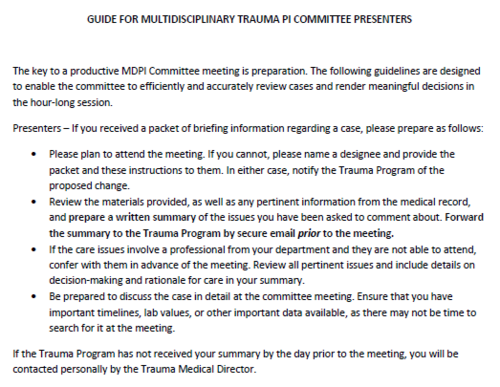Resuscitative endovascular balloon occlusion of the aorta (REBOA) is the big thing these days. I’ve written about this topic in the past, and a number of centers continue to refine our understanding of this new(er) tool. A recent paper from the University of Florida – Gainesville outlines their experience in implementing this procedure at an academic Level I trauma center.
This trauma program is staffed by a group of surgeons who have considerable experience in guidewire-based skills, fellowship or military exposure, and/or completion of a vascular fellowship. One surgeon attended a trauma endovascular skills course (6 hrs). An internal education program with a 1.5 hour slide presentation and some hands-on simulation training was developed. All surgeons and residents completed this program.
A retrospective review of their experience from June 2015 to March 2017 was carried out on unstable trauma patients due to hemorrhage. All cases were performed in a hybrid OR with imaging capabilities. A 12Fr REBOA catheter was initially used, but was changed to 7Fr once that catheter became commercially available.
Here are the factoids:
- 16 patients underwent REBOA in this 22 month period; mean SBP was 97 torr and mean ISS was 39
- Hemodynamic status improved in 10 of 16 patients to a mean SBP 132
- 14 survived the initial operative procedure, but only 6 survived to hospital day 30. It appears that all of these patients were neurologically normal (GCS 15+0).
- 1 survivor developed a common femoral artery pseudoaneurysm
- The authors made the interesting comment that they also performed 8 ED thoracotomies (EDT) during this period and that there were no survivors
- The authors concluded that the procedure was beneficial, that extensive training was not needed, and that it should be available trauma centers
Bottom line: But not so fast! This was a very select academic Level I center. The surgeons had extensive wire skills and vascular experience. All procedures were performed in a hybrid room, which is a very controlled OR setting. And they only performed REBOA every 6 weeks or so.
REBOA is still an advanced procedure, and the average trauma surgeon would probably benefit from some more intensive training to ensure adequate initial skills. But if the surgeon can’t then maintain their skills via somewhat regular practice, errors may creep in. In a group of 6-8 surgeons, each may only get to perform the procedure once a year! Add in some interested emergency physicians, and no one can keep in practice.
The bit about ED thoracotomy is a bit of a red herring. Typically, this procedure is performed once the patient has lost their vital signs. Comparing mortality from REBOA with EDT here is not valid, because it appears that most of the REBOA patients in this study still had vital signs when it was inserted. It would be interesting if the authors shared the outcomes in the REBOA patients who had the device inserted after arrest to level the playing field with EDT.
So what to do? Be cautious and thorough if you are planning to try out REBOA at your center. Do the math. On how many patients per year can I expect to perform this? How many physicians want credentialing to do it? How many procedures can the typical physician expect per year? What is the baseline level of physician training and what additional training is needed? Will I report my experience to a national registry or write it up for sharing?
These are important questions! Everyone wants to play with the newest shiny toy in the toybox. But make sure that when you do play with it, you are able to provide the maximum benefit to your patients with the least amount of harm!



